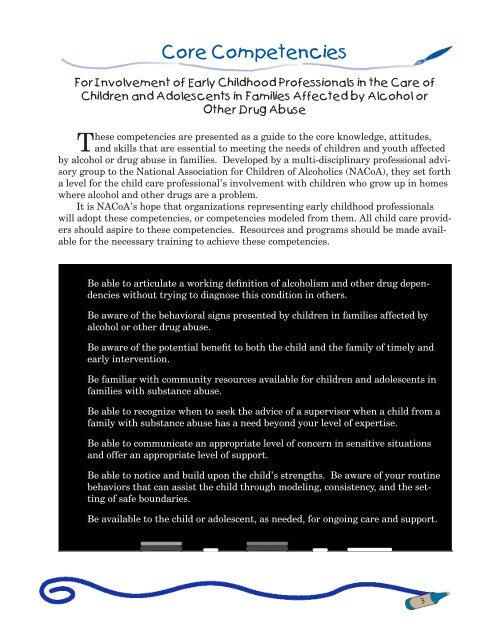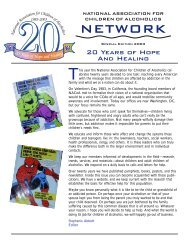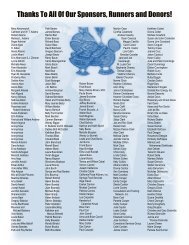Contents - NACoA
Contents - NACoA
Contents - NACoA
Create successful ePaper yourself
Turn your PDF publications into a flip-book with our unique Google optimized e-Paper software.
Core Competencies<br />
For Involvement of Early Childhood Professionals in the Care of<br />
Children and Adolescents in Families Affected by Alcohol or<br />
Other Drug Abuse<br />
These competencies are presented as a guide to the core knowledge, attitudes,<br />
and skills that are essential to meeting the needs of children and youth affected<br />
by alcohol or drug abuse in families. Developed by a multi-disciplinary professional advisory<br />
group to the National Association for Children of Alcoholics (<strong>NACoA</strong>), they set forth<br />
a level for the child care professional’s involvement with children who grow up in homes<br />
where alcohol and other drugs are a problem.<br />
It is <strong>NACoA</strong>’s hope that organizations representing early childhood professionals<br />
will adopt these competencies, or competencies modeled from them. All child care providers<br />
should aspire to these competencies. Resources and programs should be made available<br />
for the necessary training to achieve these competencies.<br />
Be able to articulate a working definition of alcoholism and other drug dependencies<br />
without trying to diagnose this condition in others.<br />
Be aware of the behavioral signs presented by children in families affected by<br />
alcohol or other drug abuse.<br />
Be aware of the potential benefit to both the child and the family of timely and<br />
early intervention.<br />
Be familiar with community resources available for children and adolescents in<br />
families with substance abuse.<br />
Be able to recognize when to seek the advice of a supervisor when a child from a<br />
family with substance abuse has a need beyond your level of expertise.<br />
Be able to communicate an appropriate level of concern in sensitive situations<br />
and offer an appropriate level of support.<br />
Be able to notice and build upon the child’s strengths. Be aware of your routine<br />
behaviors that can assist the child through modeling, consistency, and the setting<br />
of safe boundaries.<br />
Be available to the child or adolescent, as needed, for ongoing care and support.





